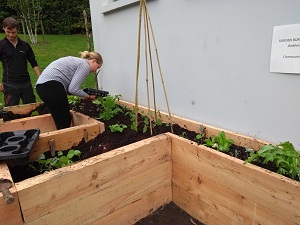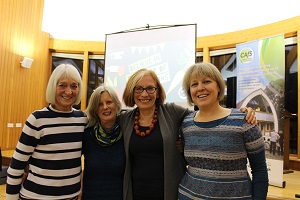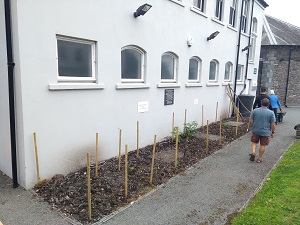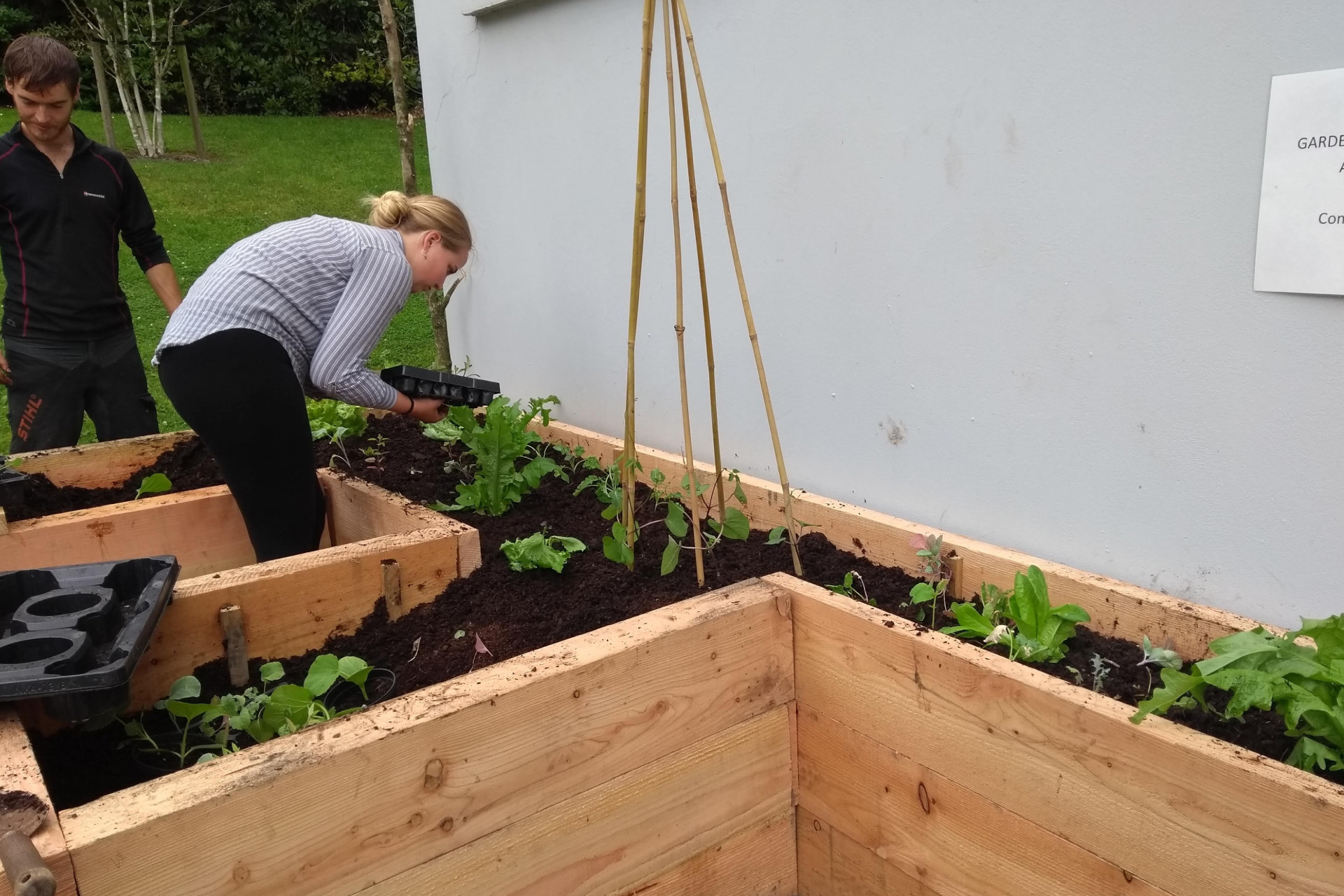Could Ambleside become a zero carbon community? That’s certainly the goal of the town’s sustainability organisation, Ambleside Action for a Future (AAFAF), and CAfS is helping to make it a reality.
In 2019, we began a package of support for the town, thanks to support from South Lakeland District Council and the Space to Connect fund. Here’s a quick guide to what’s been happening.
All in the plan
 What would it take for Ambleside to become carbon neutral? That’s the big question, and we’re helping to answer it. We’re creating a detailed, costed programme that would lead AAFAF towards their goal.
What would it take for Ambleside to become carbon neutral? That’s the big question, and we’re helping to answer it. We’re creating a detailed, costed programme that would lead AAFAF towards their goal.
“The first step is to learn what the community wants to happen, and then we’ll develop the plan in partnership with them,” said Rhona Pringle from CAfS. Rhona has been working closely with AAFAF, attending their monthly meetings to learn about their ambitions for the town, and to offer advice.
She has also been supporting some of the sub-groups within AAFAF, including their ‘Ambleside to Zero’ group and the Incredible Edible Ambleside team.
Becoming carbon neutral will mean working with a wide range of partners, and Rhona has begun making some of those links – for example, with the University of Cumbria, Ellergreen Hydro, the Lake District National Park Authority (LDNPA) and local businesses.
Funding
Alongside South Lakeland District Council’s funding to develop the plan, Rhona has also secured £7,300 from the Co-op Foundation’s Space to Connect fund.
Thanks to this funding boost, AAFAF has been holding community conversations about how green spaces could be used around the town. Two sessions took place on 20 and 20 November 2020.
Based on the outcomes from these conversations, AAFAF will deliver workshops based on the outcomes of these conversations, and they’ll undertake training to prepare the group to deliver projects in the future.
Inspiration
 CAfS is helping AAFAF to capture learning and inspiration from what’s been achieved elsewhere. In November 2019, we organised a talk and discussion evening with Pam Warhurst, who co-founded the Incredible Edible movement. Pam told the story of how Incredible Edible got started, what it hoped to achieve, and how it has grown – from a herb planter in Todmorden, to hundreds of groups around the world.
CAfS is helping AAFAF to capture learning and inspiration from what’s been achieved elsewhere. In November 2019, we organised a talk and discussion evening with Pam Warhurst, who co-founded the Incredible Edible movement. Pam told the story of how Incredible Edible got started, what it hoped to achieve, and how it has grown – from a herb planter in Todmorden, to hundreds of groups around the world.
“The event gave people from Ambleside and the wider South Lakes district the chance to talk to Pam about the challenges and successes they’ve had with local schemes, hopefully giving encouragement and inspiring others to give community gardening a try,” Rhona said.
Where are we starting from?
 We need to know what Ambleside’s carbon footprint is now, so that we can measure the impact of local actions to reduce emissions.
We need to know what Ambleside’s carbon footprint is now, so that we can measure the impact of local actions to reduce emissions.
We’ve arranged for a team of specialists to produce a very high-level carbon footprint covering both residents and businesses in Ambleside. The Lake District National Park Authority is funding the residential aspect of it, with CAfS funding the business element. This work, by Small World Consulting, is due to be completed in December 2019.
Residents
“The carbon footprint will give us a high-level measure for strategic planning, but we recognise that individuals need to understand what their own carbon footprint is, to inform their decisions on ways to reduce it,” Rhona said.
“A CAfS volunteer has done short study looking into the various online carbon footprint tools, to see whether any of them might be suitable for Ambleside residents to use.”
Our volunteer looked at eight tools in more detail and the two options we thought could work best are:
The Carbon Footprint calculator www.carbonfootprint.com/calculator
the Resurgence Carbon Dioxide Calculator, www.resurgence.org/resources/carbon-calculator.html.
“The main issue with most of the online calculators is that it’s not easy to save and share results, which makes it more difficult for people to track whether any changes they make in their lifestyles bring about a reduction in their carbon footprint,” Rhona said.
Hospitality
There’s a high number of hospitality businesses in Ambleside, so the carbon footprint of the hospitality sector here is likely to be much higher than the average town. As with the online tools for households, we’re looking into ways to assess online options for hospitality businesses. Watch this space!
Energy
Energy is typically one of the biggest contributors to any area’s carbon footprint – from generation to supply and consumption.
AAFAF’s Ambleside to Zero group has done a preliminary assessment of electricity and gas consumption in Ambleside for the latest available year, 2017. It’s based on postcode-level data from the government website: www.gov.uk/government/collections/sub-national-electricity-consumption-data.
Their research has found that 3,816,047kWh of electricity were consumed in the Ambleside area in 2017, with gas consumption of 12,252,432.91.
As well as reducing the amount of energy used, it’s important to identify what opportunities there are for generating renewable energy in Ambleside.
We’ve begun exploring options for photovoltaics and hydro power.
Photovoltaics (solar)
Working with Lancaster University, CAfS and AAFAF arranged for an intern to map the potential roof space in Ambleside that might be suitable for hosting photovoltaic (PV) panels.
The work was carried out in October and November 2019, and the results are now being considered. We’ll be able to use this data to estimate the maximum potential generating capacity of roof-mounted PV for Ambleside.
We have supported intern’s work by providing him with an induction about PV and we’re extremely grateful to Martin Sleath at the LDNPA and Ben Dyson from Lakes Renewables for their support with the project.
Following on from this report, a software developer from Lancaster University’s Cumbria Innovation Platform will be developing software for mapping the PV. Hopefully this would allow us to change variables and re-estimate the maximum potential area and generating capacity of the remaining area. We’re hoping this work will be completed by the start of February 2020.
We can then begin exploring how a whole-place approach to PV installation to meet local demand can be progressed.
We’re also examining different models for community renewable energy.
Hydro
We’re looking into whether an existing hydro scheme near Ambleside could supply energy to the town. The challenge is that the existing regulatory framework for electricity supply is not compatible with such small-scale community energy schemes, and we’ve been looking into ways to overcome this.
Find out more
Visit the AAFAF website for more information on the group’s projects and events: http://aafaf.uk/index.html

